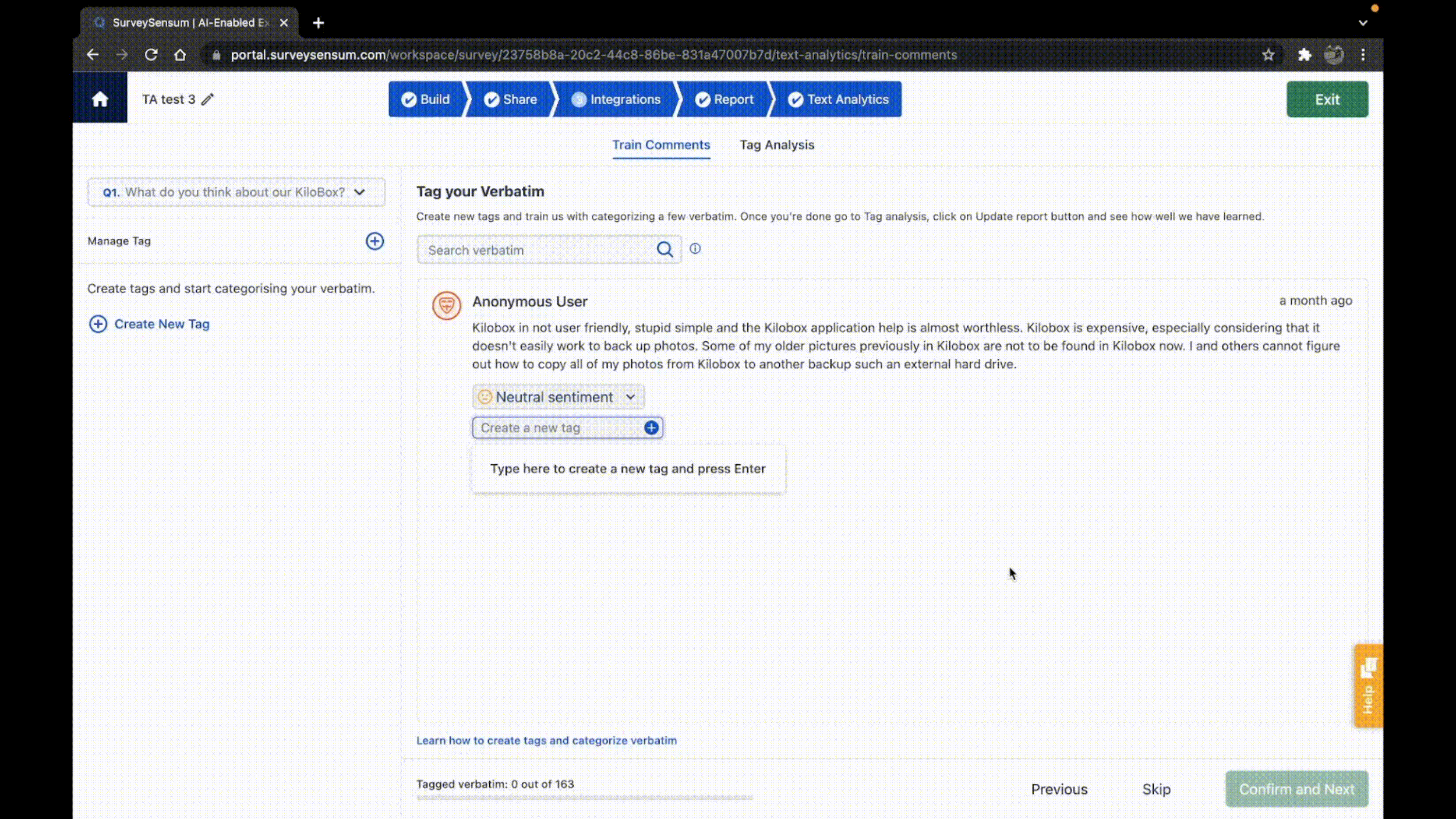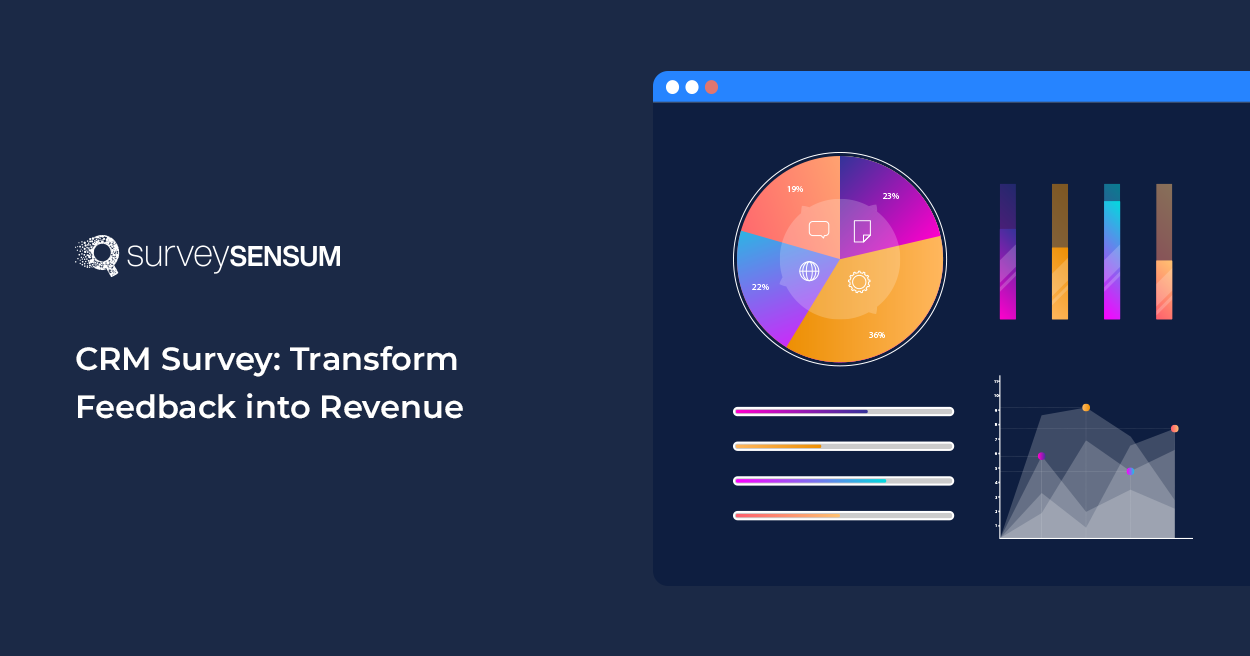
Are surveys qualitative or quantitative?
Understanding the difference between these two types of surveys is crucial if you want to research any topic or gather data. For instance, let’s say your organization has recently launched a product and wants to gauge how customers are responding to it.
Now you can approach this in 2 ways:
- You can design a survey asking them to rate multiple aspects of the product on a numerical scale.
- You can conduct in-depth interviews to get insights into customers’ feelings, expectations, and experiences.
The first way is a quantitative survey where you can easily calculate the numeric data and make generic statistics.
On the other hand, the second is a qualitative survey where you can delve into the why behind their opinions. But it requires more time and effort to analyze.
That’s not all. To create effective surveys, you must select a good survey builder tool that lets you create both surveys to gather meaningful feedback.
But when should you send which survey? And what kind of questions does each survey include? Understanding these is really important to gather crucial insights.
Let’s talk about these.
What are Quantitative Surveys?

Quantitative surveys are used to gather feedback that can be quantified and measured easily. These surveys include closed-ended questions, giving multiple predefined options for the respondents to choose from. With these surveys, you can do statistical analysis to test hypotheses for your research sent to a massive group of people.
Here are some of the quantitative survey questions examples:
- On a scale of 1 to 5, how satisfied are you with our product/service? (Rating scale)
- How often do you use our product/service? (Multiple-choice)
- How satisfied were you with the organization’s customer service staff during your recent interaction? (CSAT)
- What is your age group? (Multiple-choice)
- Which of the following brands have you heard of? (Multiple-choice)
Advantages of Quantitative Surveys
The following are the advantages of asking quantitative survey questions:
- It helps gather quantifiable data about your research topic making statistically significant conclusions.
- It gives you clear, precise, actionable customer insights to know exactly what they think as per the question.
- The feedback from quantitative surveys enables you to create a comparable analysis across multiple groups, or geographic locations.
- With these surveys, you can reach a large number of respondents quickly and cost-effectively.
Disadvantage of Quantitative Surveys
The only limitation of quantitative surveys is that you cannot understand the respondent’s behavior or reasoning behind their answers on the basis of their feedback.
How to Analyze a Quantitative Survey Feedback?
After collecting responses to the satisfaction question, you can:
- First, check whether all the responses are complete or not and remove the incomplete ones.
- Calculate the mean and standard deviation of the satisfaction scores to understand the average level of satisfaction and its variability among respondents.
- Do cross-tabulation to compare responses across different variables like satisfaction, age, etc.
- Create pie charts or bar graphs to show the distribution of satisfaction ratings and insights.
- Use inferential statistics to make generic conclusions by doing correlation or regression analysis, and hypothesis testing.
- Interpret the result to enhance your future products and services.
This is how you can systematically analyze survey data to gain meaningful insights and make informed decisions.
Want to create quantitative surveys? Customize SurveySensum’s survey template to create and launch your quantitative surveys to large groups of people instantly for free. Sign Up Now
Now let’s explore qualitative surveys in depth along with their advantages and disadvantages.
What are Qualitative Surveys?

Qualitative surveys help you to gather detailed customer feedback. It uses open-ended survey questions which urge respondents to share their opinions, expectations, and experiences in their own words. This qualitative insight allows businesses to know the reason behind their responses.
Here are some qualitative survey question examples to use in the survey:
- What is the one thing that makes your experience satisfactory in your recent purchasing experience?
- How can we enhance our service to make your experience seamless?
- Which product do you like the most and why?
- Why would you recommend our brand to your friends and colleagues?
- What makes us unique from our competitors?
Advantages of Qualitative Surveys
The following are the advantages of including these questions:
- It gives in-depth feedback and personal opinions as open-ended questions encourage them to share their choices and experiences in words.
- It lets you understand the context including why and how behind quantitative data, giving you a deeper understanding of the complexities in your research topic.
- It is ideal for identifying new pain point areas that can be used later to generate hypotheses for your research.
Disadvantages of Qualitative Surveys
Some of the disadvantages are:
- Analyzing open-ended feedback can be time-consuming as they are detailed and require you to go through each feedback thoroughly.
- The data can be subjective, relying heavily on the researcher’s interpretation.
How to Analyze Qualitative Surveys?

You can easily analyze qualitative survey feedback with SurveySensum’s Text Analytics software.
- First, train the software by reading a few comments to create a few relevant categories. For example, for a SaaS company “Product Quality” can be one of the categories.
- Then add some keyword to the categories. For example, for the “Product Pricing” categories you can add keywords like “Affordable” or “Ideal for small businesses”.
- Now, after you have trained the system, you can see in the tag analysis how the every comment is being tagged automatically into relevant categories. For example, comments like “poor user interface” will tagged in the “website design” category and “seamless integration” will be tagged under “product features” category.
- After the tag analysis is done, you will receive a detailed analytical report of top customer trends and sentiments in a matter of minutes.
- The software also helps in segmenting responses into promoters, passives, and detractors, based on the sentiment expressed in the feedback. This segmentation lets you understand the specific concerns and positive aspects highlighted by different customer groups.
This way you saved your 40-50 manual working hours to analyze the data.
Are you analyzing the gathered qualitative survey feedback manually? Reduce your manual working hours by automating the analysis process with SurveySensum’s Text Analytics software.
Now, let’s move ahead and compare and contrast whether surveys are considered qualitative or quantitative here.
Qualitative vs Quantitative Survey
Here is a comparison table to analyze both types of surveys.
|
Criteria |
Qualitative Survey |
Quantitative Survey |
|
Purpose |
To gather detailed customer feedback by knowing why and how. |
To measure customer satisfaction and generalize results from a larger sample. |
|
Feedback Type |
Descriptive data |
Numeric data |
|
Question Type |
Open-ended questions |
|
|
Scale Type |
Feedback is expressed via comments in words. |
Feedback is given on the rating scale, Likert scale, binary, multiple-choice, drop-down, NPS, CSAT, CES, etc. |
|
Ideal For |
Identifying new areas or deep insights into complex issues |
Testing hypothesis, measuring satisfaction, and tracking changes over time. |
After knowing everything about the types of surveys, and qualitative vs quantitative survey questions, it’s time to learn when to use these surveys and the benefits of using them together.
Combining Qualitative and Quantitative Survey Questions
Using qualitative and quantitative surveys together is great but deciding which one to use relies on your research OBJECTIVE to gather the data, you need.
Use qualitative surveys to
→ explore complex topics where detailed customer insights, and perspectives are required.
Launch qualitative survey
- At the beginning of a research project
- When exploring new concepts or refining research questions
Use quantitative surveys to
→ gather statistical data while measuring customer trends, and expectations.
Launch quantitative surveys
- After initial qualitative exploration
- When you need statistical data
It is ideal to combine both surveys as they give you a complete picture to make your research more effective. By asking quantitative survey questions you can identify trends and patterns with numbers. And with qualitative survey questions, you can dive deeper into the reasons and contexts behind those trends. Here’s an example of using both in one survey:

This combination improves the reliability of your research by cross-verifying information from different angles and providing deeper insights into complex issues. This balanced approach lets you enhance your understanding and make better decisions to drive your business.
Conclusion
Now you can easily answer this question from where we started → are surveys qualitative or quantitative?
The answer is both. Because when you combine these two, you get meaningful data to add to your research. With the numbers and the in-depth feedback, you can not only ensure the numbers are genuine but you can also support them by stating the reason behind those numbers.
To leverage these surveys, use SurveySensum which lets you create surveys, easily distribute them on your preferred channel via email, WhatsApp, SMS, etc., and analyze them with text and sentiment analytics software in no time.















